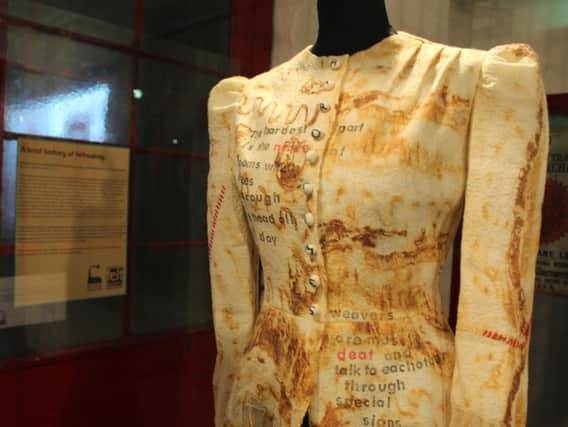Leeds Industrial Museum exhibits new material masterpieces inspired by the city's industrial heritage


Housed in a mill built in 1805 by renowned industrialist Benjamin Gott, Leeds Industrial Museum was once the world’s largest woollen factory, until production ended in 1969 and the site opened as Leeds Industrial Museum in 1982.
Today it is home to traditional looms and a spectacular array of vintage textile equipment, some of which is still operational.
Advertisement
Hide AdAdvertisement
Hide AdSupported by funding from Arts Council England and open until October 21, ‘Wool Stories’ features spectacular artistic efforts by local members of the International Feltmakers Association (IFA), all of whom spent over a year studying the museum’s collection.


The International Feltmakers Association first visited the site last year, which then inspired them to create the collection. Their organisation aims to increase the general involvement in feltmaking through a network of not only regional groups, but exhibitions, lectures, and workshops.
Members of the IFA attended workshops and investigated the museum’s archives in order to find out more about how the mill once worked, before then spending hours crafting their creations.
Their work includes clothes and 3D sculptures, which aim to chart the story of textile production at the mill. One sculpture shows the mill’s towering chimney, whilst a broad-brimmed hat depicts the nearby waterwheel, both of which can still be seen on site today.
Advertisement
Hide AdAdvertisement
Hide AdThe mill on which this exhibition is based on was once the largest of its kind in the world, with fifty gigantic looms working to produce textiles that were then shipped across the globe.


Leeds Museums and Galleries’ assistant community curator, Chris Sharp, said: “The pieces that have been created are really impressive and a fitting tribute to the museum’s history as a place that played a key role in making Leeds one of the textile industry’s leading lights around the world”.
Mr Sharp continues that the equipment on display at the museum have “clearly been a huge inspiration for the artists who worked on this project” and that “The collection they have produced will hopefully give visitors a different way of exploring our industrial heritage as well as being a reminder of the skill and artistry that exists today.”